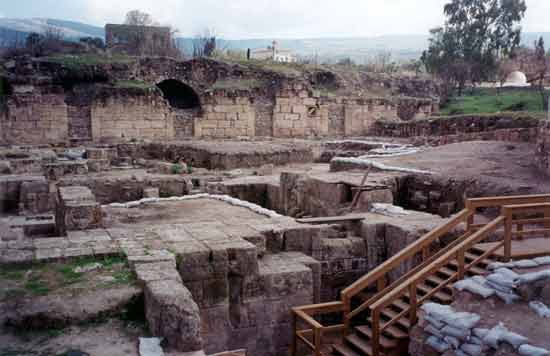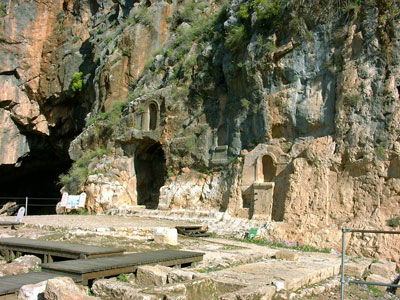Introduction
Nazareth
Capernaum
Tell Dan
pistachio
Caesarea Philippi
Old Jerusalem
palm market
Lachish
Tell Beersheva
market
ibex
Timnah Park
Eilat
Hazor |

Caesarea Philippi (1999)
The ruins of Caesarea Philippi were partially excavated
and not open to the public. A fence blocked
entrance to this site outside the gate of the Banias Park. Near the base of
Mt Hermon
was the source of the
Hermon River branch of the Jordan River flowing from a cave. The Greeks had named the place Panias. The Arabs pronounced it Banias. Within a few hundred
meters of the gushing springs were the ruins of of Phillip's capitol with remains of a Herodian
era palace a stone throw away from the place below a cave where the river
flows out of cracks in the rock. This area was named Caesarea
Philippi during the Roman era Herodian dynasty.
Jesus
journeyed to this area during his ministry. Above the ruins are the Golan Heights and Mt.
Hermon. Hermon was partly obscured by clouds and snow capped during my tour of the Golan Heights.

(FEB 2002)
At the left edge was the cave of Pan, a Greek god of Nature. In
the niches to the right of the cave the Greeks and Romans may have
placed statues of their god(s) and worshipped in the presence of the
statues. The Romans had hundreds of gods, but did not accept the
God Jesus taught about as being legal until the time of Constantine in
the fourth century A.D.
View of Roman ruins as restored in 2006.
|